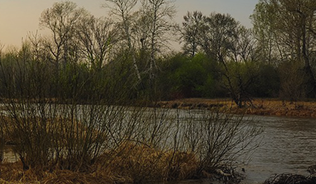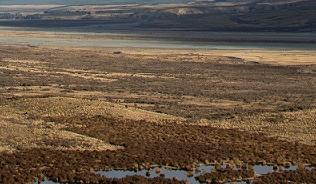We are already half-way through 2021, and the Office for Environmental Protection (OEP) is still not here. Many of the delays in its creation could perhaps have been avoided. The expectations many had last year about the speed of Parliamentary processes were not met, partly due to uncontrollable circumstances and partly due to legislative lethargy. In the interim, we have been left with uncertainty and gaps in our environmental protections.
However, even as we push for a speedy end to the delays, we should not lose sight of the quality of the organisation which is being created. Transitions take time, and a strong future for environmental protections relies on an OEP built with care.
What still needs to happen before the OEP can be brought to life?
It would be easy to think that everything necessary to set up the OEP is already in place. After all, lots of the work to constitute the OEP has happened: for example, IES Chair Julie Hill has just been appointed as one of the Non-Executive Directors of the new body. However, there are still some final hurdles which need to be cleared before the finishing touches can be put in place.
Firstly, the beleaguered Environment Bill needs to finish its passage through the Houses of Parliament. While the OEP is an inevitability, the legal basis of the organisation is in the Environment Bill. If the Bill is amended in the House of Lords, as is currently expected, there may still be some final back-and-forth with the House of Commons. Either way, the blockages and delays which have marred the Environment Bill’s time in the Parliamentary chambers seem almost over.
A slew of appointments needed to constitute the OEP are well underway, and there are more to come. For the OEP to be effective as an institution, it needs to have the right people with the drive and skills to see it thrive. As a professional body working to develop the skills of our members, the IES knows all too well how much difference a single person with the right skills and attitude can make to an organisation.
With all this in mind, the latest predictions suggest that the OEP will be in place by autumn. However, that does not mean it will be immediately at full strength and ready to ensure robust environmental protections wherever necessary. In the interim, the gap between the European Commission and the OEP has been filled by the Interim Environmental Governance Secretariat (IEGS), though there are concerns about its efficacy in ensuring protections are in place. With such a short lifespan, it was inevitable that it would not provide the same certainty and consistency needed for effective protection as a permanent institution.
The final gap between the IEGS and the OEP will be filled by the Interim Office for Environmental Protection, which may be better placed to address that concern, but will still not be operating at full strength, without the legal status to act when environmental protections are broken. Instead, the interim OEP will focus on producing an assessment of progress towards the 25 Year Environment Plan, putting in place the final preparations for the work of the OEP itself to begin in the autumn.
Speed vs Strength: where’s the balance?
During these last stages of scrutiny and implementation, there is a difficult balance to be struck. Do we push for the OEP to be put in place as quickly as possible, avoiding a prolonged gap in protections? Alternatively, do we continue to give scrutiny as much depth as possible, trying to achieve the best possible OEP for the future?
In these final stages, we need both speed and strength. Perhaps in this case, the length of the process so far has given those involved in scrutiny the preparation they need to make the most of this precious time.
The same challenge is going to play out across other environmental work. One example of the trade-off between speed and effectiveness will be familiar to many of us: when responding to the climate crisis, should we seek change which is transformative, but longer and more difficult to achieve, or should we seek quick, incremental changes to improve our situation immediately? As always, the answer requires a degree of nuance. There needs to be a plan for long-term transformative change, a central policy theme for the IES, but this cannot come at the expense of meaningful action now.
The same must be true for the OEP: our work to establish the OEP as quickly as possible cannot compromise the strength of the organisation when it is in place, and our work to reach the highest possible standards of environmental protection cannot delay the onset of the organisation indefinitely. That will require a difficult balancing act by the policy makers, as well as careful and active scrutiny by the environmental sector and profession. Whether our collective work will be rewarded is yet to be seen.
Should we be disappointed?
It is true that the process to bring the OEP into existence after the UK’s exit from the European Union has taken longer than expected. That said, it’s impossible to be too disappointed at this stage. If these delays are the price of a body which is sufficiently robust to ensure a generation or more of environmental protections which stem the tide of environmental degradation, and if the OEP is strong enough to hold the Government to account on that task, then the delays will have been worth it.
The real disappointment will be if the OEP comes into force and it becomes clear that it does not live up to expectations. If the trade-off we expect is between speed and strength, it will be a sorely missed opportunity if the OEP arrives with neither. Given the time taken over the process, there is no excuse for an OEP which does not have the strength to shield the environment from harm.
Regardless of what kind of OEP we end up with, the IES will continue to scrutinise its implementation, as well as the rest of the Government’s approach to environmental policy. Similarly, whether or not the OEP is strong enough to guarantee environmental protections and pursue better standards, the IES will continue to play its part to fight for the voice of science, scientists and the natural world.





